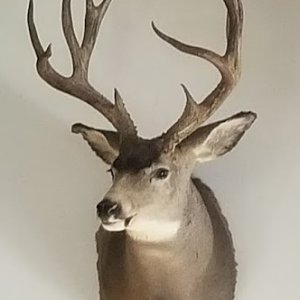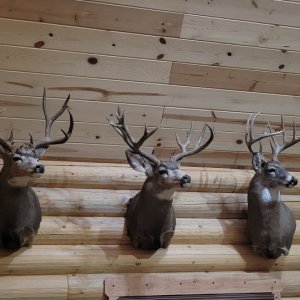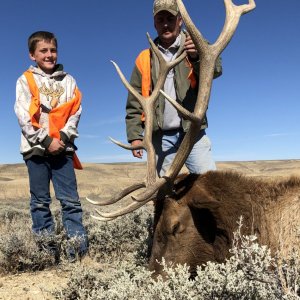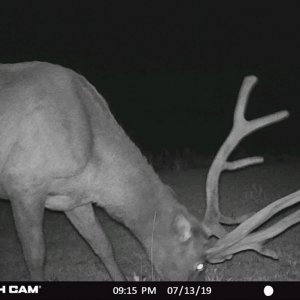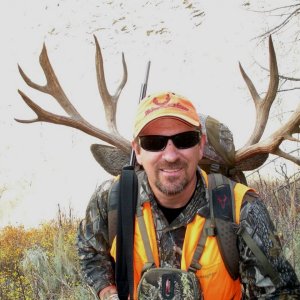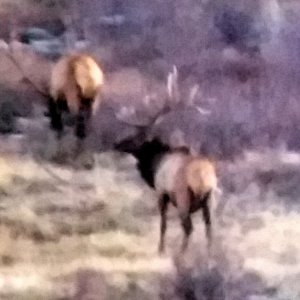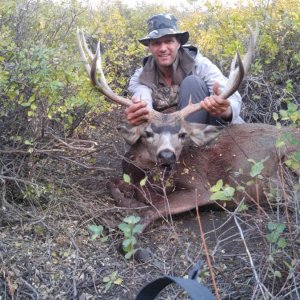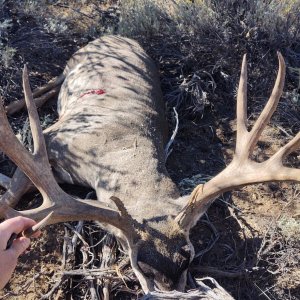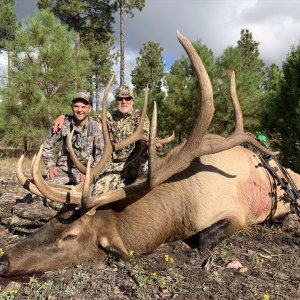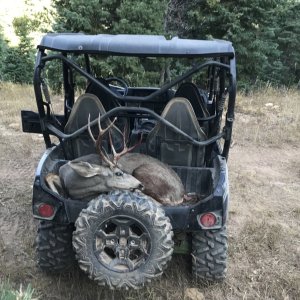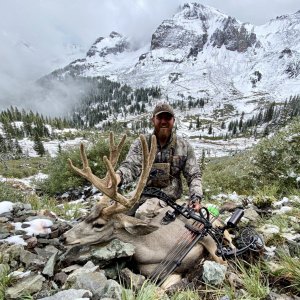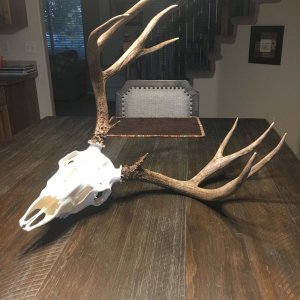2lumpy
Long Time Member
- Messages
- 8,030
Sportsmen from south central Utah attended a meeting with the UDWR and University research scientists tonight in Richfield. Prior to the meeting we submitted questions to the presenters so they could address our specific concerns.
I've listed the question here, before but this time with really, really brief answers, as I understood them. We had information burn out tonight so there are many many things that were discussed, in far greater detail, than I'm capable of passing along.
Nothing is an exact quote from the meeting, I've paraphrased everything as closely as my notes will allow me too.
elkfromabove drove up from Cedar, I hope he will share what he found significant as well.
This is pretty long, so you might want to read it when you've got a bowl of popcorn and a can of liquid to waste it down.
Here you go, if your interested:
Many sportsmen and professional biologists believe the Monroe Unit cougar and coyote/fawn study a huge waste of time and limited money. a) One group believes they all ready know, from past research, that reducing predators, specifically coyote and cougars does not generate a significant increase fawn survival. b) The other group believes they all ready know, from past research, that reducing predators, specifically coyote and cougars does in fact generate a significant increase in fawn survival. Why do you believe we should have started this study and why do you believe we should continue, based on the data that has been collected thus far. What more is there to learn?
Answer:
They said they started the study because, in fact, the UDWR, nor anyone else, knew if reducing predations significantly would impact/improve fawn survival. There have been two studies done in the past, one in Idaho and one in New Mexico and neither come to a definite conclusion either way, therefore, Utah?s DWR wanted to know for sure, thus the study was funded and will be conducted.
Fawns/Coyotes - So now what are the birth/survival trends of fawns? Is it better because of coyote reduction or something else like less winter kill?
Answer:
After having completed two years of a four year study, the mule deer population has increased from an estimated 5500 +/- head, to 7800 +/- head. The researchers do not attribute the increase to weather, all thought the weather has been favorable. So far, it looks like predator reduction, primarily coyote reduction, has caused the growth, however, the researchers warned against assuming any thing at this time and will not draw up any conclusions until the study has been completed, in another two years.
Does the research link coyote population to fawn survival? Cougars- What are we learning from the cougar study? How many are there? Is the population growing or shrinking? How frequently does a cougar kill? What age of deer do cougars target?
Answer:
It is starting to look like there is a link to coyotes and fawn survival. Regarding cougars;
This answer was a little more convoluted, in my opinion, ,because cougars are so difficult to study, they leave very little information behind and capturing, monitoring and analysising is so expensive and time consuming and takes many many years to gather enough data to sort out what's actually happening. The Monroe cougar study is in it's 19th year, however, not all 19 of the years have been studying fawn survival/courgar data.
Some of the interesting things they share were these:
A single tom will control a large geographic area with as many females as the area can hold. Usually many females to a single mature tom. In an area where a mature tom has establish his territory, all the young toms leave the territory. The young toms travel through other territories looking to fill a void and establish an area themselves or keep wandering and avoiding mature, established territories. Then the mature tom is removed from the area, all hell breaks loose, as a lot of young toms will move onto the geography left open and attempt to become the dominate male. Killing of both males and females occurs and cougar chaos reigns until a male establishes dominance. Of note, they said killing a mature tom does not necessarily reduce fawn kills because of the number of young males that move on the area after the mature male is gone. More males need more meals so killing mature males may actually cause a situation where more fawns are killed because for a period of time the cougar population increases, until one male become dominate again.
Cougars kill coyotes, mostly when coyotes move in on an uneaten portion of a cougar kill. They kill them at other times, but the study indicates most killing is over coyotes stealing a cougar?s left-overs.
Cougars kill deer, primary at these times, last winter (Feb and March), especially fawns because fawns have used most of their fat reserves and are low on energy. They kill does heavy in pregnancy, and they kill bucks (I think they said when the bucks were weakened from the rut.) but to be honest with you, I can't actually remember what he said about when they focused on the bucks. However, they did say that coyotes kill the most fawns in June and cougars kill fawns in July, August, and Sept. They said, so far, thirty percent of the fawns born are killed by predators (coyotes or cougars).
At this time there are and estimated 22 cougars on Monroe. The coyote research groups said they were working on taking DNA from scat transects to get an estimated coyote population but I don't recall they had that figure ready to release yet. If they did, I missed it.
Different classes of cougars kill deer more or less frequently. The males, the young females, the pregnant female and the female with partially grown kittens all require different amounts of protein so their killing frequency varies. The two example they gave were: a male will average .75 deer a week, a female with kittens will average 1.5 kills per week. The others are somewhere in between .75 and 1.5 per week.
They don't answer the specific ages of deer that cougars kill but from the other things they said it would seem to suggest they kill deer of all ages but they target certain types of deer it very specific times during the year.
How many coyotes were killed on the north end of the Monroe Unit by the helicopters on the first year of the study? What were the killing conditions, ie: weather etc?
Answer:
They killed 54 in 2012 from the helicopter. 40 killed by helicopter in 2013. The weather was good enough to kill a satisfactory and statistically viable number of coyotes. They explained the ?rule? for defining a satisfactory and valid number of coyotes but it was lengthy and I lost track of the details but in the end, I was satisfied that enough coyotes were removed, in both years, to meet the scientific communities standard for a statistically valid data collection. (I wouldn't have the slightest way for knowing what's valid and what's not, but they were questioned rather vigorously and gave us enough information regarding scientific peer requirements, to the degree that I think most in attendance was satisfied as well.)
How many were killed on the north end on the second year. What were the killing conditions, ie: weather etc?
How many were killed on the north end on the second year. What were the killing conditions, ie: weather etc?
Answer:
See above.
What are the buffer zones for the north and south parts of the Unit. Is there a map of the buffer zones we can see?
Answer:
Buffer zone data was not provided. It did not seem to hold a significant interest to the research teams for this meeting but in fairness to them, they did say they had buffer zone data and in the final research papers they would include buffer zone observations and how they may or may not interacted with the dynamics of coyote/fawn survival relationships on the unit.
Did you kill coyotes in the buffer zone (next to the Unit), on the north end in year one and year two, if so, how many?
Answer:
They did but did not present any data at the meeting.
Have any of the collared deer from the Monroe moved off the Unit. How far have collared moved on the unit?
Answer:
Many collared deer moved off the unit, some as far as 35 miles from their summer pastures, however, all the researchers were a little surprised that all but one collared doe returned to the exact same summer location where she had spend the previous year.
How do you know when you have killed enough coyotes or cougars to change or alter the fawn survival rate?
Answer:
They said that prior to any research they establish a minimum data set that must be gathered for the research to be valid. These standards are critical to scientific validity and scientific research reputation. Loose standards or improper standards destroy the University?s reputation and it's standing in the greater research community. The University guard this reputation at all costs. They are making certain their statistical sample sizes meet and exceed the requirements in the research community.
A simple explanation one the research team leaders gave me after the presentations was this: we killed coyotes until we couldn't find any more tracks to follow with the helicopter and we didn't give up until we had looked every where possible, on the designated research area.
How many cougars are on the Monroe? How do you know that? What percentage of error do you use in your cougar estimate. With elk the Division uses 20 -25%, what error factor are you using for cougars?
Answer:
22 at present. The percentage of error was not discussed and no one brought it up in the meeting.
We need to know what their assessment is in regards to habitat. We need to know specifically if the habitat -- winter range specifically-- can support more deer and what is the realistic number for population. If they determine that the habitat can not support more growth then we are just throwing money away in increased predator control. If there is more room for growth then we need to stay serious about predator reduction and even increase our efforts to reduce mortality by predators.
Answer:
The gentleman that sent this question to be asked this question may have been at the meeting but the question was not address, that I recall. If he was there he didn't ask about it during the question and answer period.
To be frank, we were getting really great data and information for 2 solid hours, like we were drinking from a fire hose, I was in sensory over load most of the night, so it might have been discussed but I don't think it was. It certainly is a valid and important part of the information that needs to be considered and the next chance I get I will try to ask someone to put an answer to it.
How many deer are there on the Unit? What is the carrying capacity of the Unit for deer? How do you determine the carrying capacity of the Monroe? Do you use the same method to determine carrying capacity on the Monroe as you use on the West Desert, Henry Mountains, Logan Canyon, the Wasatch Front?
Answer:
They believe there are, give or take, 7800.
Carrying capacity specific to the Monroe was not discussed, as I recall. This certainly needs to be discussed if this deer population contuinues to respond as it is presently.
Nobody is actually out counting mule deer to determine total population, how to you come up with your estimate of total deer on a unit? I'm asking this because I would like to know if there is any correlation between total coyote carrying capacity and the fawn survival abilities of a deer herd when it approaches total unit carrying capacity. Do you believe there is a correlation and if so, what would it be? When a deer herd reaches some thing near total carrying capacity on a unit, can it support a coyote population that has reached it's carrying capacity. Does this ever happen in the real world or only in theory?
Answer:
Not discussed, as I recall. Good question though, it should be followed up on, at our next opportunity.
Is anyone in the study group checking to see if there are any relevant issues between reducing coyotes and it's effect on the behavior of cougars and visa versa, as it relates to fawn survival? If you reduce cougar populations do coyote populations increase, and visa versa? Is data from this specific study been collected and analyzed regarding this question, that can be released?
Answer:
Yes but my head was spinning about the time they discussed it so I apologize, I don't remember the details, hell, I don't remember anything about this question, accept to say it was discussed!
I think habitat, weather, infectious disease, high speed roads, poachers, etc. etc, are killing more deer than cougars or coyotes. How can your very small Monroe Mountain project prove that droughts and heavy winters are not the primary reason for low fawn counts? What's your sample size? Who say?s it's conclusive? As a research biologist, don't you think a two to four year study, focused on cougars and coyotes is too short to learn much of anything, much less justify killing a large number of predators with the simple hope it will help deer?
Answer:
They were pretty (the research team from the University) confident that it (the research) will be comprehensive enough to provide a lot of new and valid predator/fawn survival facts. They seemed to be starting to see some trends they believe will be solid and reproducible on other deer units in the west. They are guarded, as I said earlier, about making any premature predictions. They were more than sure they were following true scientificallyproven methods and getting high quality data.
How much has been spent killing coyotes on the Monroe in the last two years, including helicopters, labor, sportsmen?s bounties, professional trappers, etc. Do not include any of the research related costs, just the actual cost to killing x number to the State for killing x number of coyotes?
Answer:
They didn't say and know one asked.
What are the fawn/doe ratios on the Monroe now? What were they before the study started?
Answer:
They had them but I don't recall exactly. However a report I got from one of the presenters prior to the meeting said, the north end, that has had two years of coyote reduction, was 75 fawns per 100 doe this year and the untreated south end was 39 fawns per 100 doe, this year.
I do recall the presenter saying that the fawn doe ratios on the south end where higher before they started the study, so they've reversed rather significantly now that coyotes have been remove from the north. If they gave us the actual ratios from before the study started I don't recall what they were.
Do we know what the fawn/doe ratios were on the north end separated from the south end before the study started two years ago. I mean, can we compare fawn/doe on the north and south before the study, to fawn/doe now that the study is underway?
Answer:
Yes. Don?t recall the specific numbers.
What a waste, nobody believes these studies regardless how they turn out. When was the last time you every heard of the outcome of a DWR study? These research projects get written up and shoved in some university's filing cabinet and never see the light of day. Let's be honest, isn't this just another bunch of college kids working on a PhD. project? What good can come from this?
Answer:
What can I say. After tonight I'm pretty encouraged we're going to have some valuable new information that will help management decisions. The presenters were not the students, they were there tonight but it was the professors from the Universities that did the presentations and addressed the questions, they all seem involved on the field work themselves.
Some people think that fawn survival is almost entirely tied to weather conditions. As you compare the weather on the South end of the Monroe to the North end, as there been any notable difference? More or less snow, rain, hot, dry etc. that could reflect a difference in fawn survival from north to south, without regard to the coyote/cougar reduction project?
Answer
They said, as far as they have been able to tell there has been little to no difference in weather patterns on the unit. Same conditions exist on both the north and south ends of the unit.
Secondly, are there any other factors besides weather that may be causing a difference between the fawn survival between the north end and the south end besides the predator reduction?
Answer
If there are I don't recall them pointing any out.
What measurement standard are you using to determine if there has been a adequate coyote reduction on the Monroe Unit? Do you know how many coyotes you had to begin with, do you know how many you need to remove in order to know if you have removed enough to measure an effect on fawn survival? What does adequate remove mean, as to the Monore Unit? If there are 500 coyotes on the Monroe Mt. and you kill 250 of them, is that enough? If there are 1500 is killing 200 enough? How many coyotes did we have and how many are left now? Who decides when enough is enough?
Answer
I believe most of this has been addressed in different pieces of the answers I've given above.
As you have captured fawns at or near their birth dates, do you have a chart that shows the birth dates of all those captured? I'd be interested in know the actual dates the fawns are born each year.
Answer
They did have a couple of charts specific to this. The mean birthday was June 16th, with a nice bell curve starting June 2nd and ending about the first week in July, as I recall. Heaviest birth definitely in mid-June. Actual birth days of every fawn in the study is available.
On the Monroe, of the captured and monitored deer, what percentage are killed by predators, road kills, poaching, disease, other causes? Do you believe these percentage are similar to the percentages on the total deer mortality of all deer on the unit?
Answer
A third of all fawns born are killed by predators. They didn't break out the mortality factors by %, as I recall. They said they were confident the sample size was a valid representation of the rest of the unit.
How much of this information that your getting off the Monroe can be used to manage predators and improve fawn survival on other units in the State? Are you going to need to do a study on every unit? Why or why not?
Answer
They believe most if not all their data can be used beyond the Monroe unit, State wide. They didn't actually address having to do the same research on every unit.
Do predators ever over populate like deer and elk?
Answer
Don?t recall hearing anything specific to this but they talked about predator?s having smaller numbers of young, when population of they prey base was low. They actually inferred all evening that predator numbers followed deer numbers up and down, some times quite delayed, but never the less they said managing predators for maximum impact on deer populations had to be careful synchronized with deer populayion trends, particularly with cougars.
Can someone in the research group compile the data and with a brief explanation of the latest information and publish it on the Internet like they have been doing on the Holden/Phavant Unit Deer Transplant?
Answer
They promised to do better.
If circumstances like weather, politics, funding, etc interrupt the study, are there contingencies in place that will allow it to continue until a proven conclusion can be reached?
Answer
They said yes, but so far they don't believe they have needed to use any.
Let me wrap this up by saying I've been to hundreds of wildlife meeting with the DWR folks, this was, if not the best, at least in the top three I've ever attended. They started on time, the presenters were amazing and spoke in language we could all understand. There was absolutely no condescension, from any party in the room. Questions where asked politely and the answers were very specific and to the point. There was not hedging or apologizing for not having the data available because they came well prepared. The information was succinct and to the point but complete and appropriately thorough.
I wish every sportsman in the State could have been to this meeting tonight, it was exactly what we had hoped for, which was to update sportsmen on the progress of the study.
I want to especially thank Kevin Bunnell, UDWR South Region Supervisor for encouraging these ?town hall meetings?, (what a difference it is making), Justin Shannon, UDWR State Big Game Biologist, for offering to bring all of the presenters together and for making all of the arrangements for the public to attend. John Shivik UDWR State Predator Biologist brought his cougar professional and researchers and turned them loose, and I appreciated how candid and open they all were, with their information and especially their answers to the publics questions. Thank you John and thanks to all the sportsmen and women who came, I hope everyone feels as positive about the meeting as I do.
DC
I've listed the question here, before but this time with really, really brief answers, as I understood them. We had information burn out tonight so there are many many things that were discussed, in far greater detail, than I'm capable of passing along.
Nothing is an exact quote from the meeting, I've paraphrased everything as closely as my notes will allow me too.
elkfromabove drove up from Cedar, I hope he will share what he found significant as well.
This is pretty long, so you might want to read it when you've got a bowl of popcorn and a can of liquid to waste it down.
Here you go, if your interested:
Many sportsmen and professional biologists believe the Monroe Unit cougar and coyote/fawn study a huge waste of time and limited money. a) One group believes they all ready know, from past research, that reducing predators, specifically coyote and cougars does not generate a significant increase fawn survival. b) The other group believes they all ready know, from past research, that reducing predators, specifically coyote and cougars does in fact generate a significant increase in fawn survival. Why do you believe we should have started this study and why do you believe we should continue, based on the data that has been collected thus far. What more is there to learn?
Answer:
They said they started the study because, in fact, the UDWR, nor anyone else, knew if reducing predations significantly would impact/improve fawn survival. There have been two studies done in the past, one in Idaho and one in New Mexico and neither come to a definite conclusion either way, therefore, Utah?s DWR wanted to know for sure, thus the study was funded and will be conducted.
Fawns/Coyotes - So now what are the birth/survival trends of fawns? Is it better because of coyote reduction or something else like less winter kill?
Answer:
After having completed two years of a four year study, the mule deer population has increased from an estimated 5500 +/- head, to 7800 +/- head. The researchers do not attribute the increase to weather, all thought the weather has been favorable. So far, it looks like predator reduction, primarily coyote reduction, has caused the growth, however, the researchers warned against assuming any thing at this time and will not draw up any conclusions until the study has been completed, in another two years.
Does the research link coyote population to fawn survival? Cougars- What are we learning from the cougar study? How many are there? Is the population growing or shrinking? How frequently does a cougar kill? What age of deer do cougars target?
Answer:
It is starting to look like there is a link to coyotes and fawn survival. Regarding cougars;
This answer was a little more convoluted, in my opinion, ,because cougars are so difficult to study, they leave very little information behind and capturing, monitoring and analysising is so expensive and time consuming and takes many many years to gather enough data to sort out what's actually happening. The Monroe cougar study is in it's 19th year, however, not all 19 of the years have been studying fawn survival/courgar data.
Some of the interesting things they share were these:
A single tom will control a large geographic area with as many females as the area can hold. Usually many females to a single mature tom. In an area where a mature tom has establish his territory, all the young toms leave the territory. The young toms travel through other territories looking to fill a void and establish an area themselves or keep wandering and avoiding mature, established territories. Then the mature tom is removed from the area, all hell breaks loose, as a lot of young toms will move onto the geography left open and attempt to become the dominate male. Killing of both males and females occurs and cougar chaos reigns until a male establishes dominance. Of note, they said killing a mature tom does not necessarily reduce fawn kills because of the number of young males that move on the area after the mature male is gone. More males need more meals so killing mature males may actually cause a situation where more fawns are killed because for a period of time the cougar population increases, until one male become dominate again.
Cougars kill coyotes, mostly when coyotes move in on an uneaten portion of a cougar kill. They kill them at other times, but the study indicates most killing is over coyotes stealing a cougar?s left-overs.
Cougars kill deer, primary at these times, last winter (Feb and March), especially fawns because fawns have used most of their fat reserves and are low on energy. They kill does heavy in pregnancy, and they kill bucks (I think they said when the bucks were weakened from the rut.) but to be honest with you, I can't actually remember what he said about when they focused on the bucks. However, they did say that coyotes kill the most fawns in June and cougars kill fawns in July, August, and Sept. They said, so far, thirty percent of the fawns born are killed by predators (coyotes or cougars).
At this time there are and estimated 22 cougars on Monroe. The coyote research groups said they were working on taking DNA from scat transects to get an estimated coyote population but I don't recall they had that figure ready to release yet. If they did, I missed it.
Different classes of cougars kill deer more or less frequently. The males, the young females, the pregnant female and the female with partially grown kittens all require different amounts of protein so their killing frequency varies. The two example they gave were: a male will average .75 deer a week, a female with kittens will average 1.5 kills per week. The others are somewhere in between .75 and 1.5 per week.
They don't answer the specific ages of deer that cougars kill but from the other things they said it would seem to suggest they kill deer of all ages but they target certain types of deer it very specific times during the year.
How many coyotes were killed on the north end of the Monroe Unit by the helicopters on the first year of the study? What were the killing conditions, ie: weather etc?
Answer:
They killed 54 in 2012 from the helicopter. 40 killed by helicopter in 2013. The weather was good enough to kill a satisfactory and statistically viable number of coyotes. They explained the ?rule? for defining a satisfactory and valid number of coyotes but it was lengthy and I lost track of the details but in the end, I was satisfied that enough coyotes were removed, in both years, to meet the scientific communities standard for a statistically valid data collection. (I wouldn't have the slightest way for knowing what's valid and what's not, but they were questioned rather vigorously and gave us enough information regarding scientific peer requirements, to the degree that I think most in attendance was satisfied as well.)
How many were killed on the north end on the second year. What were the killing conditions, ie: weather etc?
How many were killed on the north end on the second year. What were the killing conditions, ie: weather etc?
Answer:
See above.
What are the buffer zones for the north and south parts of the Unit. Is there a map of the buffer zones we can see?
Answer:
Buffer zone data was not provided. It did not seem to hold a significant interest to the research teams for this meeting but in fairness to them, they did say they had buffer zone data and in the final research papers they would include buffer zone observations and how they may or may not interacted with the dynamics of coyote/fawn survival relationships on the unit.
Did you kill coyotes in the buffer zone (next to the Unit), on the north end in year one and year two, if so, how many?
Answer:
They did but did not present any data at the meeting.
Have any of the collared deer from the Monroe moved off the Unit. How far have collared moved on the unit?
Answer:
Many collared deer moved off the unit, some as far as 35 miles from their summer pastures, however, all the researchers were a little surprised that all but one collared doe returned to the exact same summer location where she had spend the previous year.
How do you know when you have killed enough coyotes or cougars to change or alter the fawn survival rate?
Answer:
They said that prior to any research they establish a minimum data set that must be gathered for the research to be valid. These standards are critical to scientific validity and scientific research reputation. Loose standards or improper standards destroy the University?s reputation and it's standing in the greater research community. The University guard this reputation at all costs. They are making certain their statistical sample sizes meet and exceed the requirements in the research community.
A simple explanation one the research team leaders gave me after the presentations was this: we killed coyotes until we couldn't find any more tracks to follow with the helicopter and we didn't give up until we had looked every where possible, on the designated research area.
How many cougars are on the Monroe? How do you know that? What percentage of error do you use in your cougar estimate. With elk the Division uses 20 -25%, what error factor are you using for cougars?
Answer:
22 at present. The percentage of error was not discussed and no one brought it up in the meeting.
We need to know what their assessment is in regards to habitat. We need to know specifically if the habitat -- winter range specifically-- can support more deer and what is the realistic number for population. If they determine that the habitat can not support more growth then we are just throwing money away in increased predator control. If there is more room for growth then we need to stay serious about predator reduction and even increase our efforts to reduce mortality by predators.
Answer:
The gentleman that sent this question to be asked this question may have been at the meeting but the question was not address, that I recall. If he was there he didn't ask about it during the question and answer period.
To be frank, we were getting really great data and information for 2 solid hours, like we were drinking from a fire hose, I was in sensory over load most of the night, so it might have been discussed but I don't think it was. It certainly is a valid and important part of the information that needs to be considered and the next chance I get I will try to ask someone to put an answer to it.
How many deer are there on the Unit? What is the carrying capacity of the Unit for deer? How do you determine the carrying capacity of the Monroe? Do you use the same method to determine carrying capacity on the Monroe as you use on the West Desert, Henry Mountains, Logan Canyon, the Wasatch Front?
Answer:
They believe there are, give or take, 7800.
Carrying capacity specific to the Monroe was not discussed, as I recall. This certainly needs to be discussed if this deer population contuinues to respond as it is presently.
Nobody is actually out counting mule deer to determine total population, how to you come up with your estimate of total deer on a unit? I'm asking this because I would like to know if there is any correlation between total coyote carrying capacity and the fawn survival abilities of a deer herd when it approaches total unit carrying capacity. Do you believe there is a correlation and if so, what would it be? When a deer herd reaches some thing near total carrying capacity on a unit, can it support a coyote population that has reached it's carrying capacity. Does this ever happen in the real world or only in theory?
Answer:
Not discussed, as I recall. Good question though, it should be followed up on, at our next opportunity.
Is anyone in the study group checking to see if there are any relevant issues between reducing coyotes and it's effect on the behavior of cougars and visa versa, as it relates to fawn survival? If you reduce cougar populations do coyote populations increase, and visa versa? Is data from this specific study been collected and analyzed regarding this question, that can be released?
Answer:
Yes but my head was spinning about the time they discussed it so I apologize, I don't remember the details, hell, I don't remember anything about this question, accept to say it was discussed!
I think habitat, weather, infectious disease, high speed roads, poachers, etc. etc, are killing more deer than cougars or coyotes. How can your very small Monroe Mountain project prove that droughts and heavy winters are not the primary reason for low fawn counts? What's your sample size? Who say?s it's conclusive? As a research biologist, don't you think a two to four year study, focused on cougars and coyotes is too short to learn much of anything, much less justify killing a large number of predators with the simple hope it will help deer?
Answer:
They were pretty (the research team from the University) confident that it (the research) will be comprehensive enough to provide a lot of new and valid predator/fawn survival facts. They seemed to be starting to see some trends they believe will be solid and reproducible on other deer units in the west. They are guarded, as I said earlier, about making any premature predictions. They were more than sure they were following true scientificallyproven methods and getting high quality data.
How much has been spent killing coyotes on the Monroe in the last two years, including helicopters, labor, sportsmen?s bounties, professional trappers, etc. Do not include any of the research related costs, just the actual cost to killing x number to the State for killing x number of coyotes?
Answer:
They didn't say and know one asked.
What are the fawn/doe ratios on the Monroe now? What were they before the study started?
Answer:
They had them but I don't recall exactly. However a report I got from one of the presenters prior to the meeting said, the north end, that has had two years of coyote reduction, was 75 fawns per 100 doe this year and the untreated south end was 39 fawns per 100 doe, this year.
I do recall the presenter saying that the fawn doe ratios on the south end where higher before they started the study, so they've reversed rather significantly now that coyotes have been remove from the north. If they gave us the actual ratios from before the study started I don't recall what they were.
Do we know what the fawn/doe ratios were on the north end separated from the south end before the study started two years ago. I mean, can we compare fawn/doe on the north and south before the study, to fawn/doe now that the study is underway?
Answer:
Yes. Don?t recall the specific numbers.
What a waste, nobody believes these studies regardless how they turn out. When was the last time you every heard of the outcome of a DWR study? These research projects get written up and shoved in some university's filing cabinet and never see the light of day. Let's be honest, isn't this just another bunch of college kids working on a PhD. project? What good can come from this?
Answer:
What can I say. After tonight I'm pretty encouraged we're going to have some valuable new information that will help management decisions. The presenters were not the students, they were there tonight but it was the professors from the Universities that did the presentations and addressed the questions, they all seem involved on the field work themselves.
Some people think that fawn survival is almost entirely tied to weather conditions. As you compare the weather on the South end of the Monroe to the North end, as there been any notable difference? More or less snow, rain, hot, dry etc. that could reflect a difference in fawn survival from north to south, without regard to the coyote/cougar reduction project?
Answer
They said, as far as they have been able to tell there has been little to no difference in weather patterns on the unit. Same conditions exist on both the north and south ends of the unit.
Secondly, are there any other factors besides weather that may be causing a difference between the fawn survival between the north end and the south end besides the predator reduction?
Answer
If there are I don't recall them pointing any out.
What measurement standard are you using to determine if there has been a adequate coyote reduction on the Monroe Unit? Do you know how many coyotes you had to begin with, do you know how many you need to remove in order to know if you have removed enough to measure an effect on fawn survival? What does adequate remove mean, as to the Monore Unit? If there are 500 coyotes on the Monroe Mt. and you kill 250 of them, is that enough? If there are 1500 is killing 200 enough? How many coyotes did we have and how many are left now? Who decides when enough is enough?
Answer
I believe most of this has been addressed in different pieces of the answers I've given above.
As you have captured fawns at or near their birth dates, do you have a chart that shows the birth dates of all those captured? I'd be interested in know the actual dates the fawns are born each year.
Answer
They did have a couple of charts specific to this. The mean birthday was June 16th, with a nice bell curve starting June 2nd and ending about the first week in July, as I recall. Heaviest birth definitely in mid-June. Actual birth days of every fawn in the study is available.
On the Monroe, of the captured and monitored deer, what percentage are killed by predators, road kills, poaching, disease, other causes? Do you believe these percentage are similar to the percentages on the total deer mortality of all deer on the unit?
Answer
A third of all fawns born are killed by predators. They didn't break out the mortality factors by %, as I recall. They said they were confident the sample size was a valid representation of the rest of the unit.
How much of this information that your getting off the Monroe can be used to manage predators and improve fawn survival on other units in the State? Are you going to need to do a study on every unit? Why or why not?
Answer
They believe most if not all their data can be used beyond the Monroe unit, State wide. They didn't actually address having to do the same research on every unit.
Do predators ever over populate like deer and elk?
Answer
Don?t recall hearing anything specific to this but they talked about predator?s having smaller numbers of young, when population of they prey base was low. They actually inferred all evening that predator numbers followed deer numbers up and down, some times quite delayed, but never the less they said managing predators for maximum impact on deer populations had to be careful synchronized with deer populayion trends, particularly with cougars.
Can someone in the research group compile the data and with a brief explanation of the latest information and publish it on the Internet like they have been doing on the Holden/Phavant Unit Deer Transplant?
Answer
They promised to do better.
If circumstances like weather, politics, funding, etc interrupt the study, are there contingencies in place that will allow it to continue until a proven conclusion can be reached?
Answer
They said yes, but so far they don't believe they have needed to use any.
Let me wrap this up by saying I've been to hundreds of wildlife meeting with the DWR folks, this was, if not the best, at least in the top three I've ever attended. They started on time, the presenters were amazing and spoke in language we could all understand. There was absolutely no condescension, from any party in the room. Questions where asked politely and the answers were very specific and to the point. There was not hedging or apologizing for not having the data available because they came well prepared. The information was succinct and to the point but complete and appropriately thorough.
I wish every sportsman in the State could have been to this meeting tonight, it was exactly what we had hoped for, which was to update sportsmen on the progress of the study.
I want to especially thank Kevin Bunnell, UDWR South Region Supervisor for encouraging these ?town hall meetings?, (what a difference it is making), Justin Shannon, UDWR State Big Game Biologist, for offering to bring all of the presenters together and for making all of the arrangements for the public to attend. John Shivik UDWR State Predator Biologist brought his cougar professional and researchers and turned them loose, and I appreciated how candid and open they all were, with their information and especially their answers to the publics questions. Thank you John and thanks to all the sportsmen and women who came, I hope everyone feels as positive about the meeting as I do.
DC

